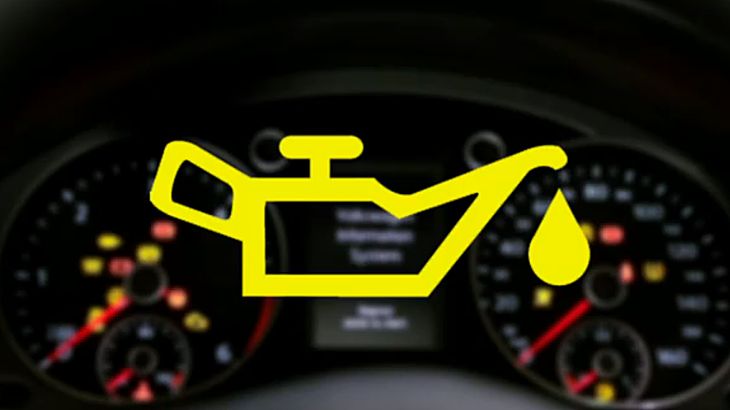 All engine metal components that rub against each other must be lubricated at all times. They are mainly pistons, cylinder liners, crankshaft and camshaft bearings. Without lubrication, these elements would be completely destroyed after a few minutes.
All engine metal components that rub against each other must be lubricated at all times. They are mainly pistons, cylinder liners, crankshaft and camshaft bearings. Without lubrication, these elements would be completely destroyed after a few minutes.
To ensure proper lubrication, the oil flows to its destination through a maze of pipes, channels and precision holes in the engine block. The oil pump plays an important role in the lubrication system. It draws oil from the sump via the supply line and forces it into the channels. Before the oil can reach its destination, it must pass through the oil filter, where it will leave the pollution, such as soot, metal filings and dust. There is an overflow valve on the pressure side of the oil pump, which opens when the oil pressure is too high, to allow excess oil to return to the sump.
The cleaned oil enters the main channel through a channel in the filter, in which the shut-off valve is located. Via the oil pressure indicator lamp on the instrument panel, the driver is informed that the pressure in the lubrication system is too low.
Regular oil filter replacement
The oil filter does its job as long as it is not clogged with debris. The filter must be replaced every time the oil is changed. When the filter is not replaced in time, it becomes clogged. the flow valve will then open to bypass the filter. In this way, lubrication of the engine is ensured, but the contaminants in the oil will cause the engine components to wear more quickly to wear.
From the filter, the oil passes through the holes in the engine block to the lubrication points of the crankshaft and connecting rods. From the main bearings of the crankshaft, oil is fed to the cylinder head and bearings of the camshaft and to the axis of the valve levers. From there, the oil flows through the return channels to the oil pan, where it is sucked in again by the oil pump.
Oil pressure
Proper oil pressure is to ensure good engine lubrication under all load conditions. If the oil is too cold and very viscous, excessive pressure may build up in the lubrication system. The overflow valve will then open the side channel (bypass) and the oil flows back to the suction side of the pump. The oil circuit will be maintained. You can get information about the oil pressure value, by mounting a suitable pressure gauge. You only have an oil pressure indicator lamp in your car.
Oil pressure indicator light
The warning light comes on only if the oil pressure is too low. When this happens, some parts of the engine may not be properly lubricated. It happens e.g.. when driving very fast on a curve of the road, if the oil level is too low. Instead of oil, the pump sucks air from the oil pan. The oil pressure drops sharply, which can seriously damage the crankshaft bearings. When driving at high speed on the highway or on mountain roads, the indicator light starts flashing at idle, then it is a sign, that too hot, and therefore too thin oil, cannot ensure the correct pressure in the system. You don't have to worry about it, if the lamp goes out completely after adding gas.
The oil pressure control lamp is still on:
Stop the car immediately and turn off the engine.
Check the oil level.
If there is not enough oil, drive carefully to the nearest gas station and refill oil. Check, that the indicator lamp has gone out.
In any other case, tow the car to the nearest workshop to find the cause. This way you don't risk seriously damaging your engine.
Shut-off valve.
An important component of the oil filter component is the shut-off valve. With the engine not running, when there is no pressure, the valve is open. It closes when the oil pressure reaches a certain value. The oil pressure check is activated after 10 seconds after the ignition is turned on. The warning light comes on after a delay of 3 seconds, a switch-off delay approx 5 seconds.
When the ignition is turned on, but without starting the engine, the control lamp on the dashboard should be on for approx. 3 seconds, then go out. A warning signal in the form of blinking of the lamp and three acoustic signals should appear, If the ignition is switched on and the engine is stationary, the shut-off valve is closed or when the engine speed is above 1500 RPM the valve remains open.
The shut-off valve operation and oil pressure can be checked with V.A.G.. 1342 (pressure gauge) i 1527B (control lamp with LED).
To do this, remove the shut-off valve and install it in the pressure gauge, which put in place of the valve in the body of the oil filter housing.
While idling, the LED should illuminate at the appropriate oil pressure for your engine model (1.4 l – from 0,03 do 0,07 MPa; 1,6 / 1,8 / 2,0 i 2,3 l – from 0,12 do 0,16 MPa). At speed 2000 rpm value of oil pressure should be minimum 0,2 MPa. If the pressure is lower, the stop valve or the oil pump is damaged, or the crankshaft bearings are worn. The oil pressure should not exceed the value of the oil pressure at a higher speed 0,7 MPa. If it is greater, the oil pressure regulating valve must be replaced.
